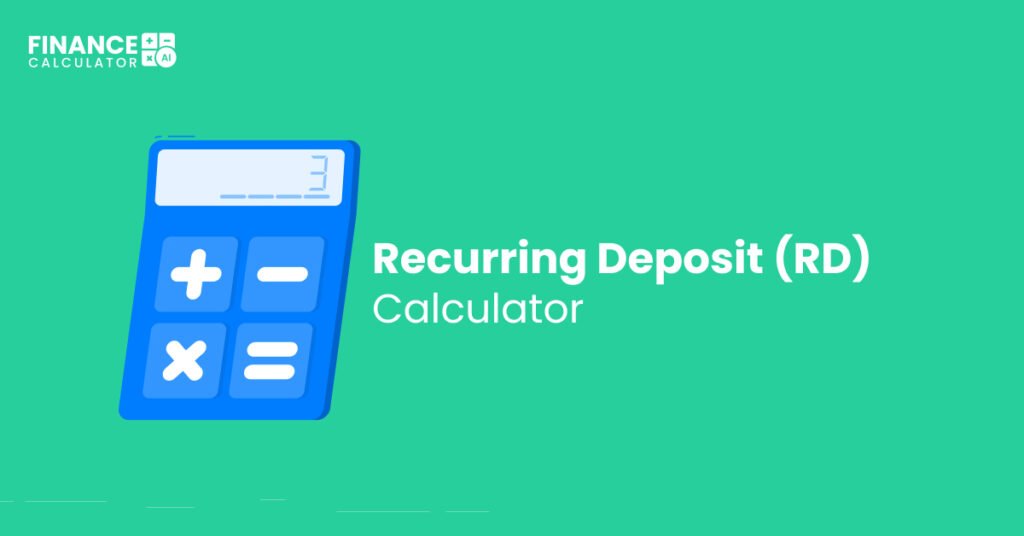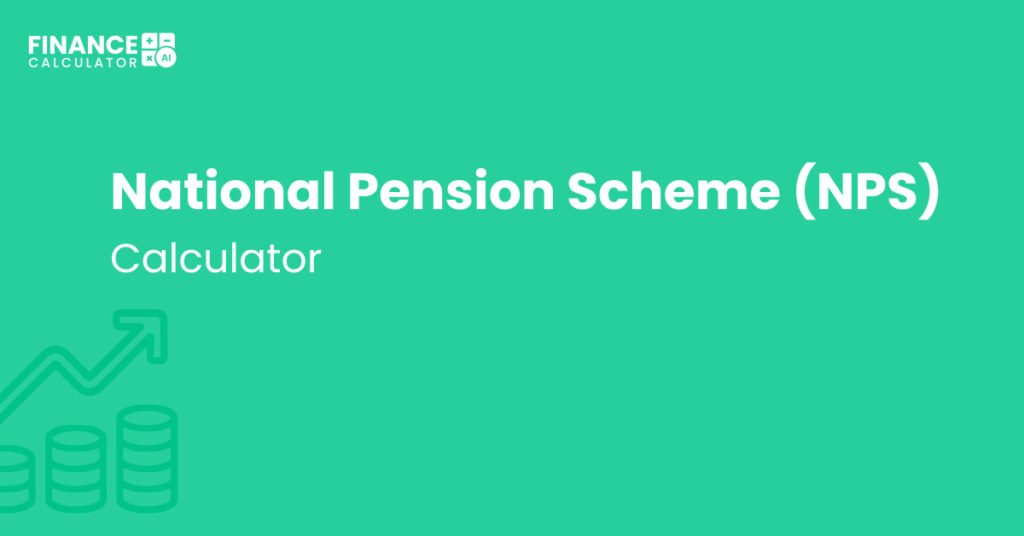Are you looking for a disciplined way to save money with guaranteed returns? Look no further than a Recurring Deposit (RD). But before you dive in, let’s explore how an RD Calculator can be your best friend in this financial journey.
Table of Contents
What is a Recurring Deposit (RD)?
A Recurring Deposit (RD) is a financial instrument offered by banks that allows you to deposit a fixed amount of money every month for a predetermined tenure. It’s designed to help you save regularly and earn interest on your savings. At the end of the tenure, you receive the maturity amount, which includes both the principal and the interest earned.

Why Choose an RD? Is it a Safe Investment?
RDs are one of the safest investment options available. They are backed by banks and come with guaranteed returns. The interest rates are fixed at the time of opening the RD, ensuring that your returns are not affected by market fluctuations. This makes RDs an ideal choice for risk-averse investors.
Understanding the Rate of Return
The rate of return on an RD varies from bank to bank and is influenced by the tenure of the deposit. Typically, interest rates range between 5% to 7% per annum. The interest is compounded quarterly, meaning the interest earned in one quarter is added to the principal for calculating interest in the next quarter.
RD vs. FD: What’s the Difference?
Both RDs and Fixed Deposits (FDs) are term deposits, but they cater to different financial needs:
– Recurring Deposit (RD): You deposit a fixed amount monthly. Ideal for those with a steady income who prefer regular savings.
– Fixed Deposit (FD): You invest a lump sum amount. Suited for those who have a large sum of money to invest at once and seek higher interest rates for long-term investments.
Think of an RD as a financial version of a gym membership where you pay monthly, while an FD is like paying for the whole year upfront.
Formula to calculate RD Interest
Curious about how much your RD will yield at maturity? Here’s the formula:
A = P*(1+R/N)^(Nt)
The variables in this equation represent-
| A | Maturity Amount |
| P | RD Installment each month |
| N | Compounding Frequency (No. of Quarters) |
| R | RD interest rate in Percentage |
| t | Tenure |
This is the standard formula used in the calculation of the RD maturity amount, regardless of the sum invested or tenure. All you need to do is put in the variables.
Don’t worry about the math; this is where an RD Calculator comes in handy!
How Can an RD Calculator Help You?
An RD Calculator is a powerful tool that simplifies the process of estimating your maturity amount. Here’s why you should use it:
– Accuracy: Get precise maturity amounts based on your inputs.
– Time-saving: Quickly compute the returns without manual calculations.
– Comparison: Easily compare RD plans from different banks.
– Financial Planning: Better plan your finances by knowing the future value of your savings.
FD or RD: Which is the Better Investment?
The choice between FD and RD depends on your financial goals and available funds:
| Choose FD if | Choose RD if |
|---|---|
| You have a lump sum amount to invest. | You want to save regularly with smaller amounts. |
| You seek higher interest rates for a longer tenure. | You aim for disciplined savings over time. |
Tax Implications and Other Considerations
– TDS (Tax Deducted at Source): Applicable if interest earned exceeds ₹40,000 (₹50,000 for senior citizens) in a financial year.
– Tax Benefits: Interest earned is taxable as per your income tax slab, and RDs do not offer specific tax benefits under Section 80C.
Practical Example: Investing ₹5000 per Month for 5 Years
Let’s say you decide to invest ₹5000 per month in an RD for 5 years at an interest rate of 6% per annum. Using an RD Calculator, you can easily determine the maturity amount and the total interest earned over this period.
FAQ
What is the minimum amount to start an RD account?
Most banks allow you to start an RD with a minimum of ₹100 to ₹500 per month.
Can I break my RD prematurely?
Yes, but there might be a penalty, and the interest rate could be lower than the agreed rate.
What is the tenure range for RDs?
The tenure typically ranges from 6 months to 10 years.
Can I get a loan against my RD deposit?
Yes, many banks offer loans up to 90% of the RD amount.
How should I open an RD account?
Visit your bank or use their online banking platform, fill out the application form, provide the necessary KYC documents, and start your RD.
Conclusion
A Recurring Deposit is a fantastic tool for those who want to cultivate a disciplined savings habit with the assurance of guaranteed returns. Using an RD Calculator can make this process even more straightforward, helping you plan your financial future with confidence. Whether you choose an RD or an FD, understanding your financial goals and using the right tools will ensure you make the best investment decision for your needs.

